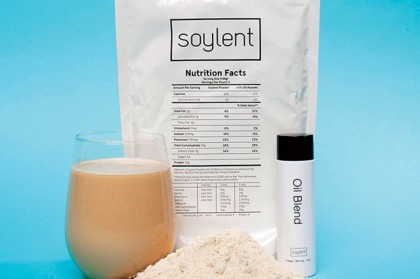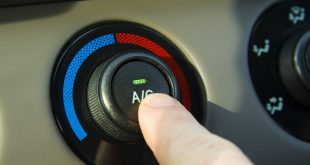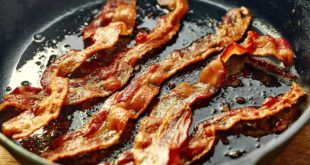
Would you give up food for the same powdered shake every day? Not because you want to drop a dress size, but because you’re, well, bored of food?
That’s the thinking behind the powdered shake Soylent. US creator Rob Rhinehart came up with the idea in 2013, when he was working as an engineer in Silicon Valley and had limited time to make healthy meals.
“I was struggling with food. I could see the appeal, but I didn’t enjoy shopping, cooking or cleaning; it just seemed very repetitive to me,” Rhinehart says.
So he set out to create a source that had all of the proteins, carbohydrates, vitamins, minerals and nutrients the body needs to function. He then lived on it for 30 days (three meals a day), named it Soylent, started a crowd-funding campaign, and raised almost $US800,000 (AU$914,000) in pre-orders in just 30 days.
Last May, the first shipment of Soylent was sent to customers. Since then, supply hasn’t been able to match demand and new customers are now advised on the Soylent website that they’ll be waiting for at least four months for their first delivery. Soylent still only ships to US customers, which has led to a wave of worldwide spin-offs (an Aussie version launched a couple of months ago).
“Soylent has struck a chord with a lot of people for whom food is sometimes more trouble than it’s worth,” Rhinehart says. “You can eat it however often you want or need to. Not everyone today likes eating fresh fruit and vegetables – people should have the freedom to enjoy different tastes.”
The weight-loss shake debate
Rhinehart doesn’t refer to Soylent as a diet tool but as a food source. He has, however, admitted that it’s easy to lose weight using his product, and nutritionists, food scientists and his detractors have all labelled Soylent as the latest in a long line of meal replacement products.
Nutritionist and accredited dietitian Dr Joanna McMillan believes that a meal replacement plan can be effective in weight management, but it needs to be factored in as just one tool among other strategies.
McMillan says, “You’re getting an illustration of the number of kilojoules you should be consuming in a day and that’s a really great lesson inportion size.”
However, she warns that it’s not a long-term weight management solution. “It’s like any diet – people go to extremes. They’ll go on a regimen for a set period of time and when they finish they flick back to what they were doing before and gradually the weight comes back on.
“Any diet can work in the short term – you have to teach yourself lifestyle and dietary factors that impact your ability to keep that weight off.” McMillan also flags the lack of chewing as an issue for appetite and mood control – something that manufacturers of meal replacement products regularly have to defend. Soylent advises its customers to chew gum if it becomes an issue.

Rob Rinehart, the creator of Soylent
A solution for global hunger?
Rinehart’s global plan is to change the lives of those in developing countries by partnering with aid organisations to supply Soylent to impoverished communities.
Yet, locally, sceptics still express concern. “A shake is still a processed food,” McMillan says. “Soylent doesn’t have all the nutrients we need for good health and optimal vitality, and it’s highly processed. We’re not meant to have our nutrients in such a processed form. It’s likely to have detrimental effects in the long term.
“At the end of the day, food is so much more than the nutrients contained,” she adds. “It’s a part of our culture and our enjoyment of life. These qualities shouldn’t be ignored on our quest for weight control.”
Soylent in action
Soylent is available for $US85 (AU$97) for a one-week supply. One sachet is mixed into 2 litres of water for a day’s serving. Soylent’s 30-plus ingredients include oat flour and rice protein, plus an oil blend. It’s often likened to porridge in texture and taste.
Source: bodyandSoul
 We are sharing information for knowledge. Presented by. SocialDiary.Net
We are sharing information for knowledge. Presented by. SocialDiary.Net



